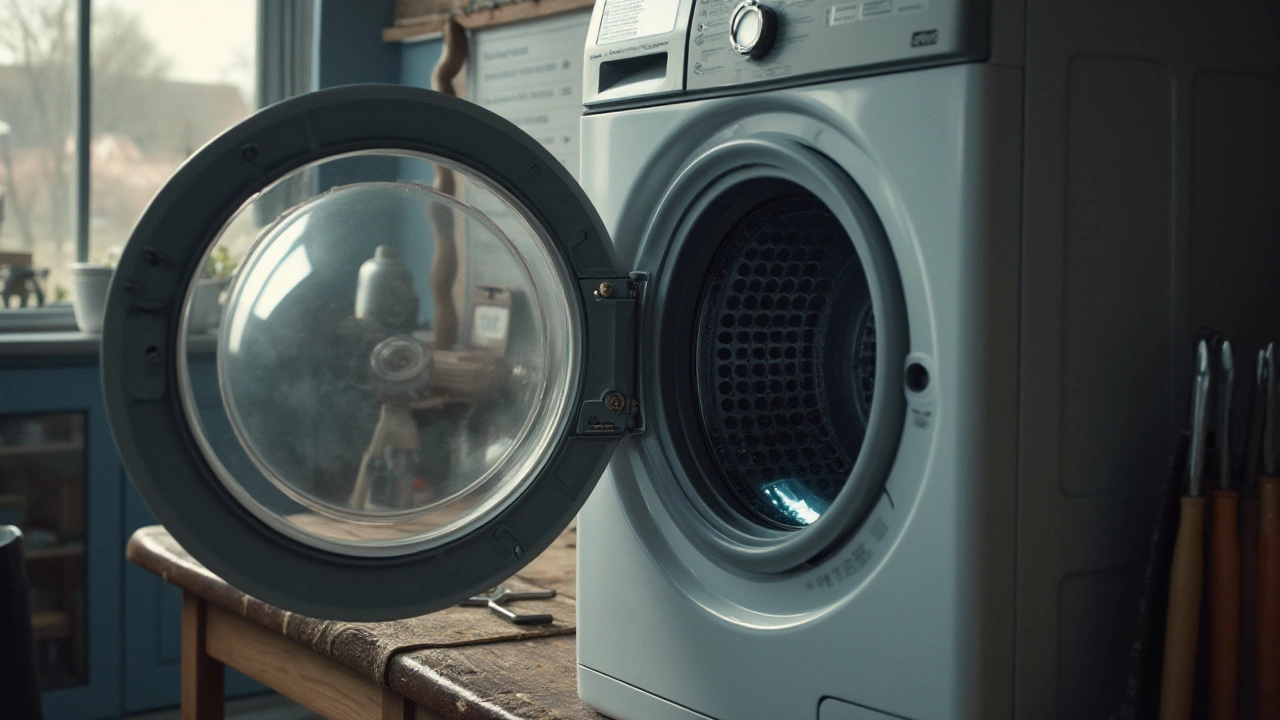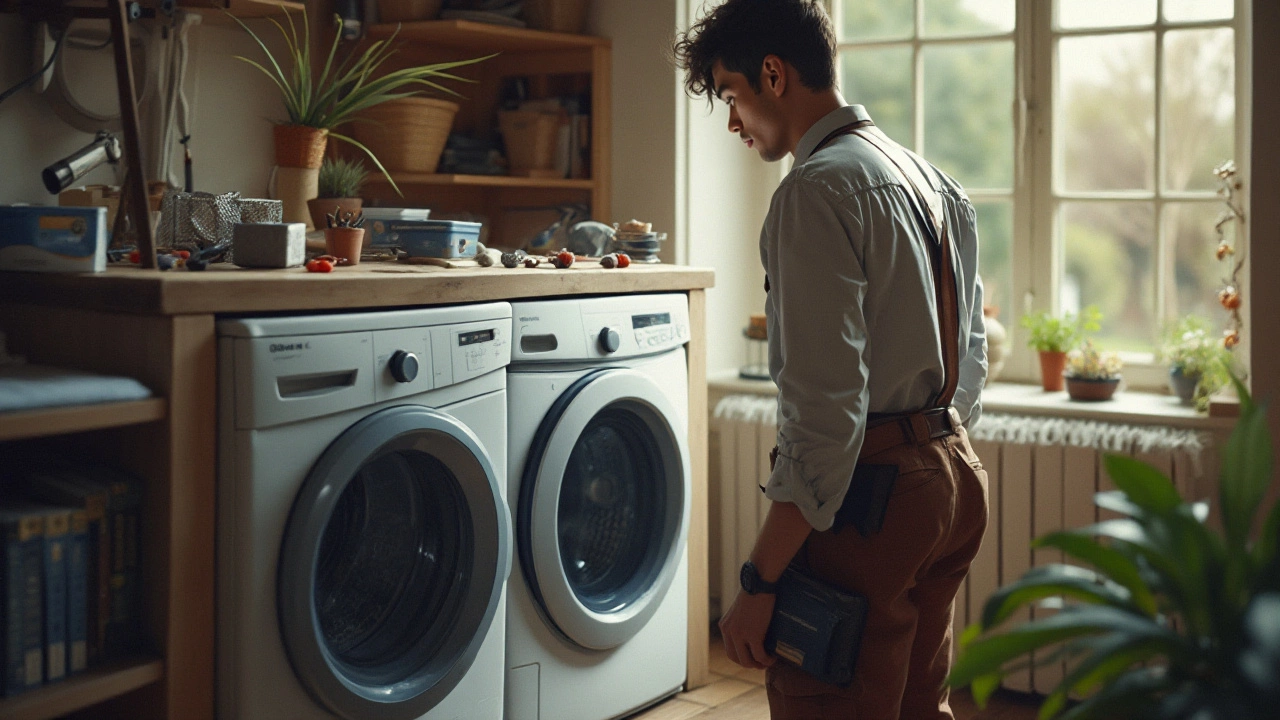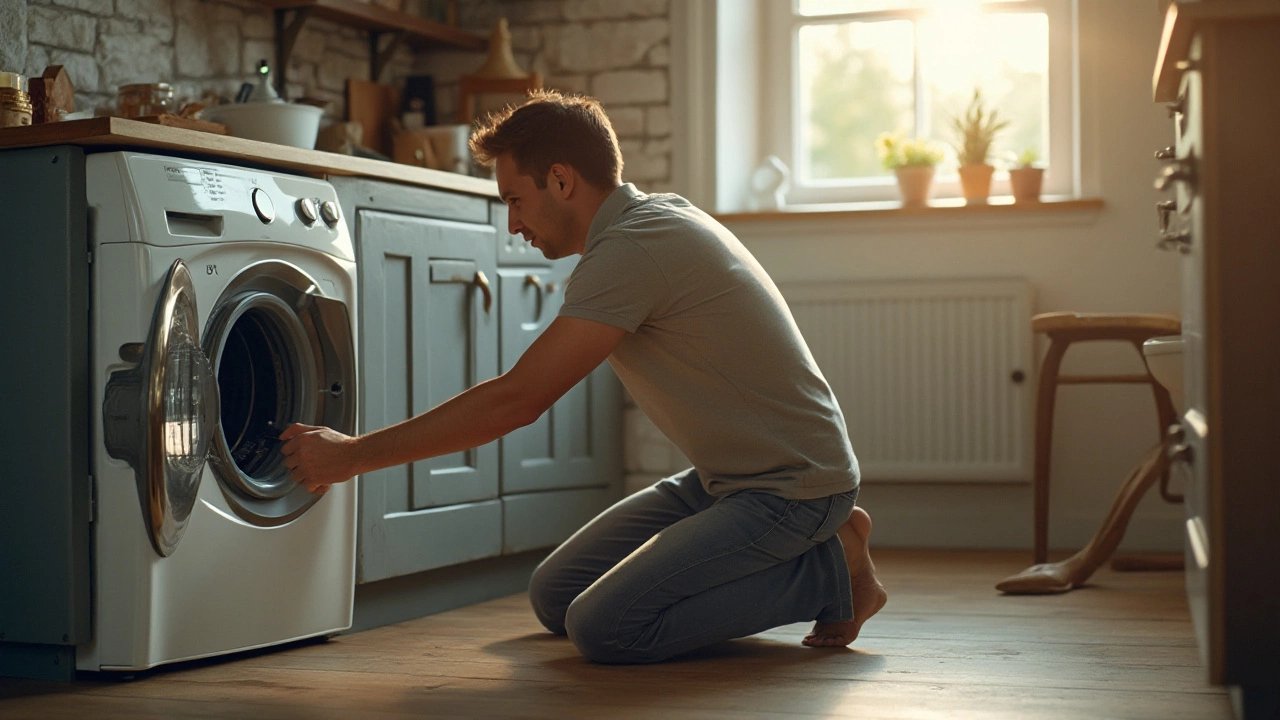Washing machines have become indispensable in our modern lives, taking the laborious chore of cleaning clothes and making it almost effortless. But what happens when this household hero breaks down, and you're faced with the prospect of repair costs? Some parts of these machines can be surprisingly expensive to replace. Forewarned is forearmed, as they say. Whether you're staring at a malfunctioning machine or simply want to stay informed, understanding which parts demand a heftier ticket for replacement can save you a mountain of frustration and wallet woes in the future.
- Identifying Costly Washing Machine Parts
- Reasons for High Replacement Costs
- Maintenance Tips to Avoid Unnecessary Expenses
- When to Consider Professional Repair Service
Identifying Costly Washing Machine Parts
When it comes to washing machines, knowing which components are prone to failure and expensive to replace can prevent a lot of headache down the line. One of the most costly parts is the motor. This essential component is responsible for spinning the drum and ensuring your clothes are thoroughly washed and rinsed. Motors are complex and when they fail, they often need full replacement rather than a simple fix. Depending on the brand and model, replacing a motor can set you back several hundred dollars, making it one of the priciest parts of any washing machine.
Next in line is the control board, or the brain of the machine. This piece communicates with all the parts and coordinates their functions. If the control board starts malfunctioning, you might experience erratic washing cycles or have the machine cease functioning altogether. Control boards are sophisticated and intricate, leading to high replacement costs similarly echoing those of the motor. The combination of technology and necessity makes it another significant expense in any repair scenario.
The drum bearings are also notoriously expensive. When these wear out, you might notice a loud noise during the spin cycle, almost akin to a roar. Although the parts themselves may not seem overly expensive at a glance, the labor involved in reaching and replacing the drum bearings raises the cost substantially. Often, access to these components requires disassembling much of the machine itself, which translates into a higher service charge.
Another hefty expense arises from issues with the transmission. Although not all washing machines have a separate transmission (some incorporate it within other systems), when it fails, it often means extensive labor. The transmission is akin to what you'd find in a vehicle, controlling the speed and direction of the drum's movement. The process to replace it involves disassembling a significant portion of the machine and can parallel the cost of a brand new appliance altogether. It's one of those replacements that make some homeowners wonder if buying a new unit would be more economical.
According to the Appliance Repair Association, "The price of high-tech components in modern washing machines may shock unprepared customers, but investing in regular maintenance can mitigate these unforeseen costs and prolong the appliance's lifespan."
Finally, let's talk about the pump. A failing pump is often marked by leaks or water not draining properly. The pump's job is crucial, as it ensures water flows correctly in and out of the drum. Replacement requires not only the cost of the part but also significant labor, as accessibility depends greatly on the machine's design. Some models hide the pump in locations that are challenging to reach, making for an expensive repair call. In essence, understanding which parts of a washing machine hold the largest price tags can help you prepare for future repairs, setting aside funds to address these issues if and when they appear.

Reasons for High Replacement Costs
When it comes to washing machine repair, understanding the economics behind parts replacement can clarify why costs sometimes climb dramatically. One significant factor is often the proprietary nature of specific components. Manufacturers design certain parts exclusively for specific models, limiting the options for replacements. This scarcity tends to drive up the prices, as alternatives from other brands simply won't fit or function correctly. Additionally, these exclusive parts are sometimes crafted from high-quality materials or involve advanced technology, both of which naturally increase their production costs and, consequently, their price tags.
Another compelling reason is that some of the most frequently replaced yet high-value parts, like the motor or electronic control board, are also the most complex. These components integrate sophisticated technology to ensure your washing machine runs efficiently and with minimal noise, incorporating features like energy efficiency sensors or digital controls. The complexity involved in manufacturing these parts increases their cost. As guidance from the Association of Home Appliance Manufacturers notes, "Complexity in an appliance's crucial components is a double-edged sword—it boosts efficiency but also repair costs." These parts often require specialized skills and tools for replacement, which adds to the expense due to potentially higher labor rates.
Interestingly, the logistics of transporting and storing these parts can also affect their price. Larger components, such as the drum or tub assembly, are not only heavy and unwieldy but require significant resources to ship. Their size and weight often demand more expensive shipping methods and greater storage space, which companies account for in the final pricing. And if you’re opting for a brand-endorsed repair service, anticipate an extra markup, as authorized dealers usually charge a premium over independent repair shops, citing better assurance of quality and part compatibility.
Market Dynamics and Pricing Strategy
The market dynamics surrounding repair costs for appliance parts are another layer to consider. Several global manufacturers dominate the washing machine landscape, maintaining their influence over supply chains and pricing strategies. This dominance can lead to a lack of competition in certain parts, keeping prices elevated. In some instances, companies might intentionally mark up prices to encourage consumers to purchase newer models instead of opting for repairs, viewing it as a strategy to boost sales of new units. An anecdotal example comes from a report by Consumer Reports, which observed that many consumers opted to replace their appliances rather than repair them when faced with particularly high repair estimates, influenced by pricing tactics.
Lastly, environmental regulations play a subtle yet crucial role. Modern washing machines are built with eco-consciousness in mind, and their parts must often comply with strict environmental standards. While beneficial for sustainability, this compliance can complicate the manufacturing processes of parts, thereby inflating costs. It's not uncommon to find that stringent production requirements, which aim to reduce carbon footprints or ban toxic components, inadvertently contribute to the highest costs that trickle down to the consumer level.

Maintenance Tips to Avoid Unnecessary Expenses
When it comes to extending the life of your washing machine and avoiding those unexpected repair costs, regular maintenance is key. First off, always keep an eye on the machine's balance. Ensuring your washer sits level on the floor can prevent excessive vibrations that might prematurely wear down its inner components. It's handy to place a spirit level on top of the machine check every few months. If your machine wobbles inconsistently, adjust the feet until it sits firm. Moreover, using the right amount of detergent matters more than one might assume. Always stick to the recommended type and quantity of detergent for your machine. Too much can lead to residue build-up, leading to potential clogs and damage to the inner drum.
Another practical tip is to frequently inspect the hoses for any cracks or leaks, preferably every few months. Replacing them every five years ensures they don't burst unexpectedly. Consider upgrading to stainless steel braided hoses, which provide an extra level of durability. From time to time, run a maintenance wash. This involves running an empty wash cycle at the hottest water temperature with a descaling product. Not only does it clear up any lingering grime in places you can't see, but it also keeps mold and bacteria at bay. A clean machine ensures efficiency, saving energy and water, which is both eco-friendly and cost-effective.
Keeping the door or lid ajar when the machine is not in use allows the inner drum to dry out, reducing the risk of mold growth which can be particularly damaging. Also, don't forget to regularly clean the detergent tray and filter. These areas often get overlooked, yet they can harbor detergent residue and lint, leading to clogs. In a conversation with Appliance Expert Magazine, Jane Reid remarked,
"Most washing machine failures are a result of simple maintenance oversights."Following some simple upkeep steps not only saves money but also preserves the lifespan of your trusty washer.

When to Consider Professional Repair Service
As much as one might feel empowered to try a hand at fixing a washing machine on their own, there comes a point when calling in the cavalry is the wisest decision. First, consider the complexity of the issue. If you notice odd electrical problems, like the machine repeatedly tripping your home's circuit breaker, you might be dealing with deeper issues that aren't straightforward to address without professional expertise. Electrical repairs not only require specific knowledge but also the appropriate safety measures to prevent hazards.
When dealing with the more intricate components of a washing machine, like the motor or gear mechanism, it pays to have a professional handle the repairs. Attempting to repair these without sufficient understanding can lead to further damage, which might ramp up costs unexpectedly. A malfunctioning motor means your machine won't agitate or spin properly, leading to a pile-up of chores no one wants to face. If parts like the gearbox are involved, it's better to reach out to experienced technicians to avoid unnecessary complications.
Another thing to think about is the repair costs compared to the age and condition of the machine. If your washing machine is nearing the end of its expected lifespan, often around 10 to 15 years, and requires substantial repairs such as replacing the tub or drum, it might be more economical to invest in a new machine. Paying for costly repairs on an old model can be like putting a band-aid on a sinking ship. Consider evaluating the machine's efficiency as well; older machines may rack up higher utility bills, which might offset repair savings.
"Before making any decisions, it’s wise to weigh the costs of repair against purchasing a new machine," suggests appliance expert Tim Fischer. "A professional can offer insights about whether the repair is worth pursuing based on your machine's make and model."
Besides, if you're not confident in diagnosing the problem or the machine is leaking water persistently, it's time to reach out to a professional repair service. Water leaks can range from minor hose mishaps to significant issues with the internal seals or gaskets. Detecting the source of the leak isn't always obvious; a professional will ensure precision and accuracy, potentially saving time and money in the long run while preventing water damage to your home.
Lastly, consider the kind of support and warranties provided by the repair service. Trusted professionals offer not just repairs but also valuable guidance on maintaining the appliance. They often provide repairs backed by guarantees; a safety net you won't have if you tackle the job yourself. Embrace their expertise not just out of necessity, but as an investment in your machine’s longevity.





